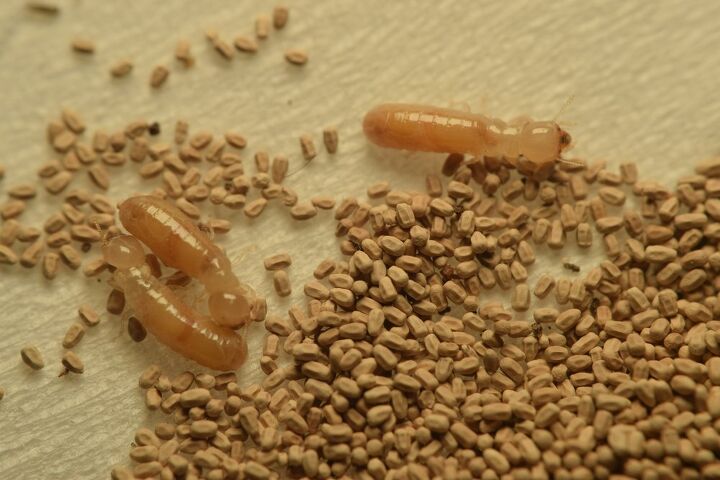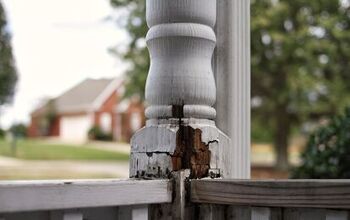Ant Droppings Vs. Termite Droppings: How to Tell the Difference

Finding droppings in your home can feel like the start of a long battle, whether it’s ant droppings vs. termite droppings. Pest problems can happen to anyone, even the most meticulous of cleaners. Each pest has different droppings, so if you are unsure about what infestation you have, inspecting their droppings can help.
There are many species of ants and termites, and each has a specific type of droppings. When considering ant droppings vs. termite droppings, ant droppings look like sawdust with insect parts and material they’ve burrowed through. Termite droppings have a dry, uniform pellet shape that is similar or closely related in color.
Although it can seem complicated at first to tell the difference between ant and termite droppings, don’t give up yet. Below we will discuss a few of the differences between the droppings that will hopefully make your identification process easier.
Do You Need Pest Control Services?
Get free, zero-commitment quotes from pro contractors near you.

An Introduction To Ant And Termite Droppings
Insect droppings — also known as frass — are an easy way to identify what pests you have. Location, shape, and color are a few factors to consider while working to identify your pests.
Ant Droppings vs. Termite Droppings: Food
Contrary to popular belief, ants do not eat wood. Carpenter ants are renowned for burrowing through wood, but they do not eat it. Ants are omnivores and will eat anything from fruit to meat.
Termites, however, do consume wood. They can also eat through drywall, paper products, carpet, insulation, and fabric. They are also known to consume plants and meat, so if you suspect termites, make sure to check your food.
Winner: Ant Droppings. Obviously, having insect droppings in your home is never ideal. Since ants do not eat any wood, paper, or other non-food items, they will consume a smaller range of products.
Ant Droppings vs. Termite Droppings: Toxicity
Ant droppings are not toxic for humans; however, they can irritate skin, so it is best to clean them with protection. An easy trick to help mask the scent of the ant trail is to spray with a vinegar/water mixture. This will not kill the ants but simply prevent them from visiting that area again.
Similarly, termite frass is also non-toxic for humans but can also irritate the skin. People often use vinegar to spray termites after cleaning their frass. But in this case, the vinegar is lethal for termites. Bleach is also another popular termite killer.
Winner: Tie. There are no major differences between ants and termites when it comes to toxicity.
Ant Droppings vs. Termite Droppings: Color
There are many ant species, and each has different types of dropping: large, small, dark, light, etc. Typically, ant droppings or frass are similar in color to the wood they are building in. It is common to find insect parts in their frass, such as legs.
Termite droppings will also match the color of the item they are consuming but can have some variations. Unlike ants, it is unlikely that you will see any other items in their droppings.
Winner: Tie. The color of ant or termite droppings does not have a positive or negative effect on your home.
Ant Droppings vs. Termite Droppings: Easy In Removal
Though ants are known to dig through damp wood, their droppings are similar to sawdust and mostly dry. This quality makes the removal very simple and shouldn’t take very long.
Termites are a similar case where their droppings are very dry. Termites also enjoy damp wood because they need the moisture for their bodies to survive.
Winner: Tie. Since both ants and termites produce dry droppings, there is no discernible difference in the difficulty of cleaning.
Ant Droppings vs. Termite Droppings: Prevention
As stated before, there are easy ways to prevent ants from coming to a specific area and leaving their droppings. Simple household cleaners such as vinegar will stop them from returning to that area.
Similarly, termites are also affected by the use of cleaners to prevent them from returning and leaving droppings. They will, however, die off if they come in contact with the cleaners, unlike ants. In addition, reducing moisture will prevent them from returning or creating any droppings in that area.
Winner: Termites. Both ants and termites are relatively simple to prevent from returning to an area and leaving droppings. For termites, you’re able to both kill and prevent them from returning using the same cleaner as you would ants.
Ant Droppings vs. Termite Droppings: Accessibility
You’ll find ant droppings outside of their tunnels. This is where they will push out the material they are burrowing through and leave their droppings.
You can also find termite droppings directly outside of the entrance of their nest. Because they eat the wood, one can assume that the droppings primarily consist of droppings.
Winner: Tie. Both ants and termites leave their droppings outside of their nests. Usually, this should be accessible to clean unless they have tunneled in a hard-to-reach area of your home.
Ant Droppings vs. Termite Droppings: Consistency
As previously discussed, ant droppings are almost always a dry consistency. Unless their nest is already damp from a leak or high moisture, their dropping should be dry. Sawdust is the word most commonly associated with the consistency of their droppings.
Termites are also known to have dry droppings. Their consistency is also similar to sawdust, but termite droppings are more pellet-like.
Winner: Tie. Ants and termites have very similar droppings when it comes to consistency. Visually there are minor differences, but the consistency is nearly identical.
Ant Droppings vs. Termite Droppings: Shape
The shape of ant droppings is likely to be the most straightforward feature when it comes to identifying them. Ant droppings are shaped like sawdust but will also have bits of insects — wings, limbs, etc. — throughout it.
Termite droppings have a very different shape. Termite droppings are oval-shaped pellets which is the easiest way to differentiate them from ants.
Winner: Termites. Since termites have a more identifiable and uniform look, it can be easier to identify them from shape.
Ant Droppings vs. Termite Droppings: Location
You’ll typically find ant droppings at the entrance of their nest. If you find droppings that appear to be sawdust, check the area directly above, and you’ll likely find tunnel entrances.
Termites dispose of their droppings in the same area. Make sure to check for other identifying features to pinpoint the exact pest infestation that you have.
Winner: Tie. Both ants and termites dispose of their droppings in the same area. This should not be the only factor in identifying the pest in your home.
Related Questions
Which poses more damage for your home, termites or carpenter ants?
Both carpenter ants and termites present a high risk for your home. While many people consider carpenter ants and termites similar creatures, there are significant differences between the two. These differences make identifying which pest you have incredibly important due to the damage each can cause.Termites are significantly more dangerous than carpenter ants, so you might not want to forget to renew your termite warranty. The most crucial difference between the two insects is that termites eat wood, and carpenter ants simply burrow. Because the wood is the termites’ food source, you will find that their nests are more extensive. Additionally, termites are known to create damage far more quickly than carpenter ants.
What does a termite nest look like?
Termite nests can be easy to spot if you know what to look for. Termite nests have a rough look and feel to them and generally are caked in mud. This is because termites must live in a moisture-rich environment to avoid drying out, which will eventually kill them.These mud tubes are found externally and are one of the easiest ways to identify a termite nest. Many people confuse termites with carpenter ants, and this is a simple way to differentiate the two.
What is the most dangerous household pest?
This statement may come as a shock, but mosquitos are overarchingly touted as the most dangerous household pest. This claim does come with caveats because not all areas of the world have mosquitos, such as Iceland. Each year, approximately 700 million people will contract a mosquito-borne disease. Of these 700 million cases, more than 1 million victims will die. Certain mosquito-borne diseases are even classified as a worldwide pandemic.In areas with a high risk of Malaria, Zika, or other mosquito-borne diseases, these infestations can quickly become deadly. Africa has the highest rate of transmission for malaria accounting for 92% of malaria cases worldwide.Although Zika is often associated with South and Central America, India actually has the highest rate of this disease. Although mosquito infestations are not particularly deadly in areas like Northern America and Europe, they are still dangerous.
Do You Need Pest Control Services?
Get free, zero-commitment quotes from pro contractors near you.

Final Thoughts
Both ant droppings and termite droppings are bad news because it indicates an infestation. The differences between the droppings are minimally different, and neither is worse than the other.
This said, there is no winner or loser here, but simply a tie. Both ants and termites are bad news, but their droppings are not dangerous or difficult to handle in any way.

Stacy Randall is a wife, mother, and freelance writer from NOLA that has always had a love for DIY projects, home organization, and making spaces beautiful. Together with her husband, she has been spending the last several years lovingly renovating her grandparent's former home, making it their own and learning a lot about life along the way.
More by Stacy Randall














![The 10 Best Table Saws - [2022 Reviews & Buyer's Guide]](https://cdn-fastly.upgradedhome.com/media/2023/07/31/9070645/the-10-best-table-saws-2022-reviews-buyer-s-guide.jpg?size=350x220)












